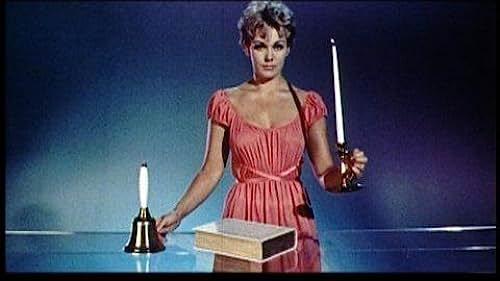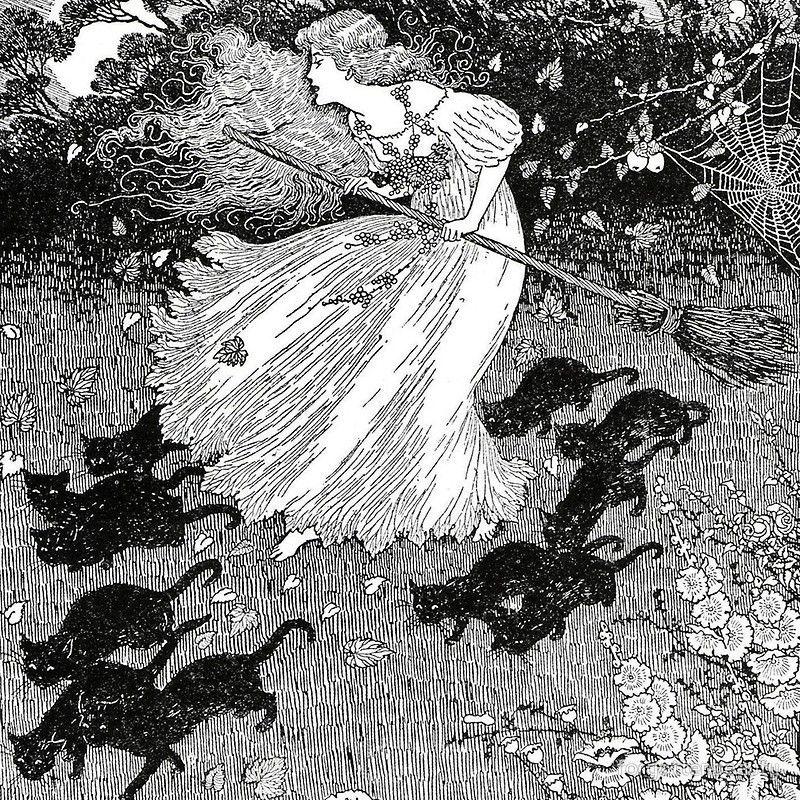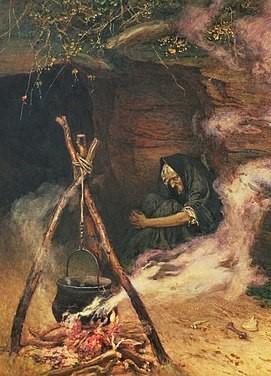
3 minute read
Witches in Love
by sara cleto & brittany warman
There’s a trope in fiction and media that we absolutely hate. In older media, especially from the mid-1800s to the mid-1900s, it was prettymuchastandardinwitchstories.Canyouguesswhatitis?
Advertisement

It’s the idea that love and witchcraft do not mix. Put another way, it’s that to fit into a romantic relationship, you can’t be a witch—youhavetogiveupyourmagic.
Thinkabouttheendofthefilm Bell, Book, and Candle (1958). Gillian,acontemporarywitchwhoownsanartstore,losesherpowers (andhercat!)whenshefallsinlove.Thisispresentedasagoodthing, a worthy sacrifice to make in order to secure a relationship. Think abouthowinthebelovedTVshow Bewitched (1964-1972),Samantha is always trying (and usually failing) to renounce her powers and live a proper human life with her husband, who has made her promise to give up magic and become a proper suburban housewife. The very idea of witches casting “love spells” implies that no one could love a witchwithouttheinfluenceofmagic…or,iftheydareto,the relations the relationship won’t work out well for them. Remember, for example, the Greek mythological story of Jason and the witch Medea. He runs off with someone else, she murders their sons and his new wife. Cheatingonwitchesisgenerallynotrecommended.


We despise this trope for a couple of reasons. First, magic is fun in so many of these stories. Why shouldawomanhavetogiveituptoenterarelationship,especiallywhenmalepartnersarenotexpectedto makea make a similar sacrifice? But more importantly, why should powerful women have to make themselves smaller to deserve romance? Why should they have to give up part of themselves? No. We reject this witheveryfiberofourbeings.
As Edna St. Vincent Millay writes in her poem “Witch-Wife” (1956), speaking as a man married to a witch, a witch “was not made foranyman,/Andsheneverwillbeallmine.”

Sometimes an older story will give the smallest bit of pushback on this. There’s a wonderful literary fairy tale, for example, called “The LittleWitch of the Plain” by Evelyn Sharp (1897). In this story, the “little witch” Blarnie loses her witch powers when she kissesaking,butthetaleendswiththenotethat“thepeoplecamejust as much as before, to ask her for advice; and when she told them to cross their fire-irons on the floor to cure their rheumatism, they always found that it did cure them; and when she told the mothers to kiss their children seven times to cure them of dis-obedience, that was always successful too. So Blarnie is still the beautiful Little Witch of the Plain." But such stories were pretty thin on the ground until relativelyrecently.

Now, however, there are more stories and more opportunities for witches in love. Sometimes this involves creating new narratives—tales like A Discovery of Witches by Deborah Harkness (2011), Beautiful Creatures by Kami Garcia and Margaret Stohl (2009), Serpent and Dove by Shelby Mahurin(2019),and Garden Spells bySarahAddisonAllen(2007)arefantasticdepictionsofwitches falling in love! Even Hallmark—notorious for their over-the-top romantic comedies—has gotten in on the action with the film The Good Witch (2008), which was so popular that it inspired several sequels and even a whole TV series (2015-2021)! Alix E. Harrow’s The Once and Future Witches (2020) is a recent and highly critically regarded tour-de-four about the love between three sisters, who use witchcraft to change the world, and the plot also contains complex, ultimately happy romances for two of the sisters. Though there are still plenty of tragic stories, more and more writers and creators are imagining romantic possibilities for witches that don’t hinge on a renunciation of magic—whichwereadasthelossofself.
Sometimes, giving witches a bit of romance simply involves looking at old stories in new ways. For example, one of our favorite witch love stories is now “Frau Trude,” an obscure tale from the Grimms’ collection, but we never would have recognized it as such without the wisdom of fabulous folklorist Kay Turner. On the surface, it looks like an especially vicious cautionary tale.A “strong-willed and forward” girl ignores her parents’warnings and defies them to seek out the witch, Frau Trude, who lives in the forest. When she arrives at the witch’s house, Frau Trude says “I have been been waiting for you and wanting you for a long time. Light the way for me now!” She turns the girl into a block of wood and throws it ontothefire.
The straightforward way to read this story is that a disobedient girl gets what she deserves for stepping out of line and seeking trouble. Not exactly romantic. But Kay Turner blew our minds when she argued in her amazing article “Playing with Fire:Transgression as Truth in Grimms’‘FrauTrude’” in Transgressive Tales: Queering the Grimms (2012) that romance can be a key to unlocking an alternative readingofthestory.
Turner argues that “[n]either the girl’s desire to go to Frau Trude nor Frau Trude’s desire to possess the girl is ultimately interrupted; rather, the plot inexorably draws the two together, promoting their encounter’s inevitable climax. Mutual attraction is the tale’s turnkey, raising the power of desire against all others. Much of the narrative establishes this mutuality, first from the girl’s, then from Frau Trude’s point of view.” Essentially, Turner believes that the girl seeks out the witch not because she is inherently disobedient but because she is drawn to her romantically and that, in turn, the witch rec reciprocates those feelings when she admits she has been “waiting for [her] and wanting [her] foralongtime.”



In this reading, the parents’ forbidding her to go to the woods takes on a very different meaning. When Frau Trude transforms the girl into a block of wood, we can read it as an act of violence or destruction, but we could also read it as a metaphor for sexual awakening. If this sounds like a stretch it’s worth thinking about the sheer number of metaphors we’ve all heard that link heat and fire to love and attraction. The final line of the story reads: “When [the girl/block of wood] was thoroughly aglow [FrauTrude] sat down next to it, and warmed herself by it, saying: ‘It gives such a brightlight!’”
Perhapswitchescanglowwiththebrightlightofloveaswell.










